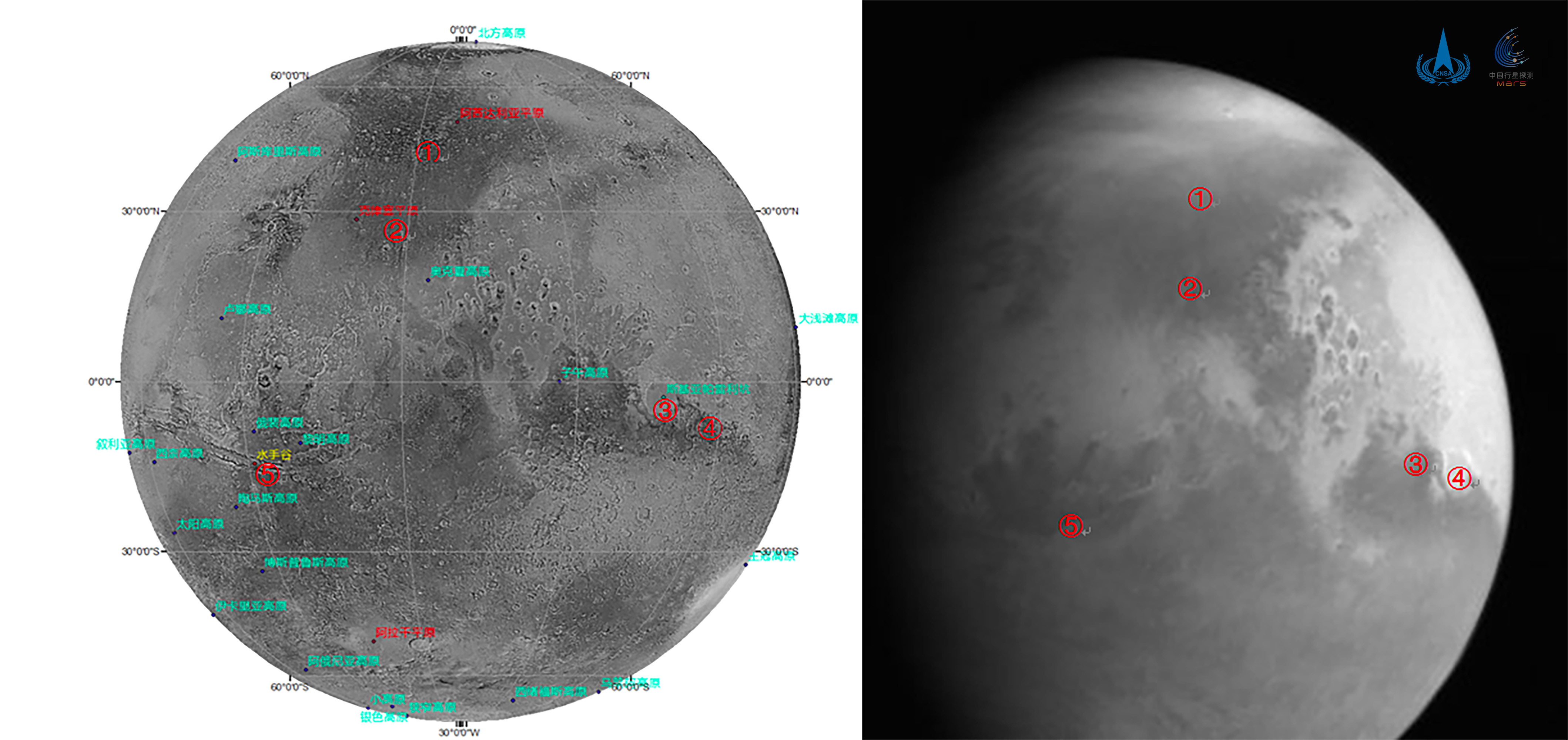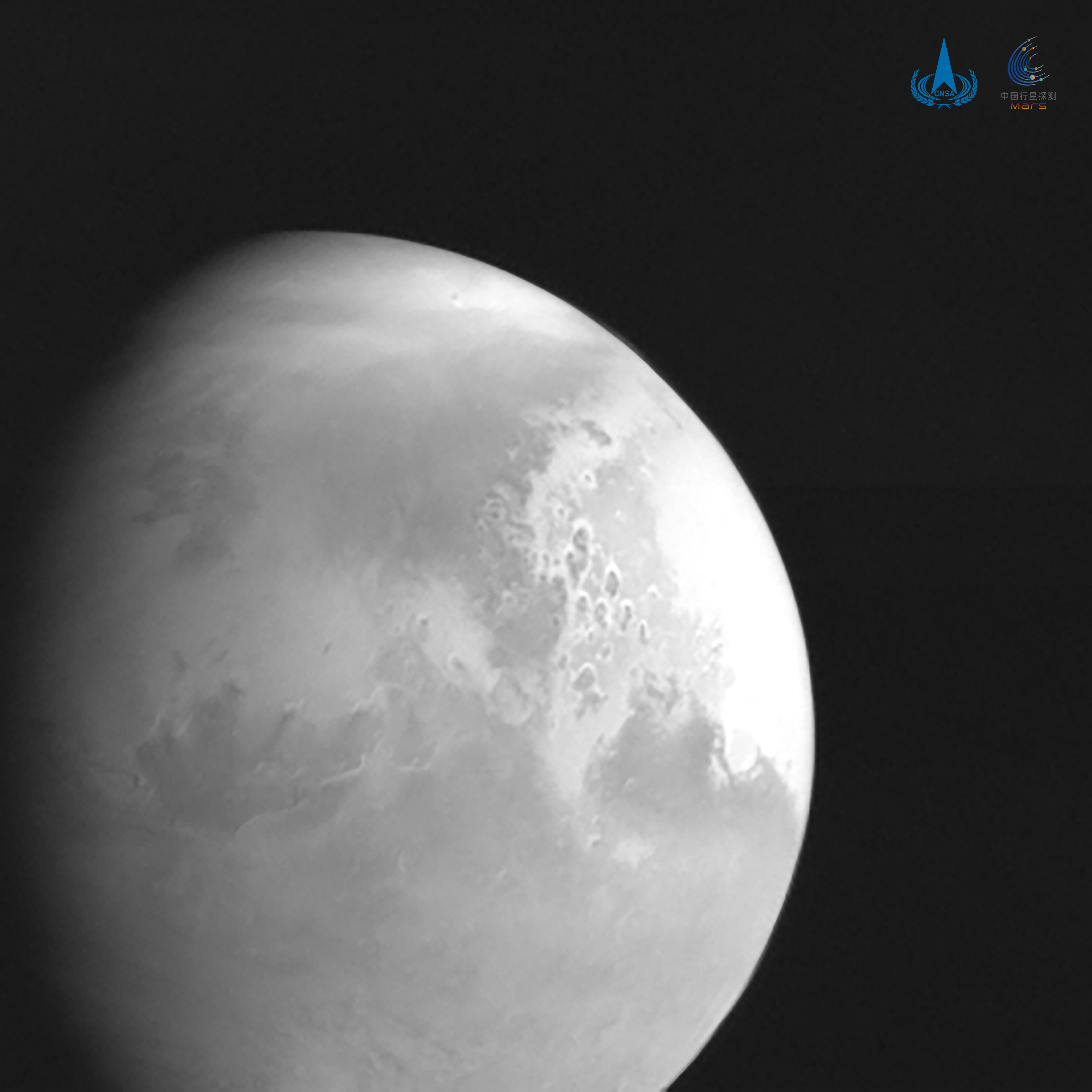China's Tianwen-1 Mars mission snaps its 1st photo of Red Planet
China's Tianwen-1 spacecraft snapped its first image of Mars as the mission makes its final approach; the probe will enter orbit around the Red Planet in less than a week.
The China National Space Administration (CNSA) released the image Feb. 5, demonstrating that the powerful, high-resolution camera on the Tianwen-1 spacecraft is working properly.
The greyscale image was captured at a distance of 1.36 million miles (2.2 million kilometers) from Mars, according to CNSA.
Related: China's Tianwen-1 Mars mission in photos
Book of Mars: $22.99 at Magazines Direct
Within 148 pages, explore the mysteries of Mars. With the latest generation of rovers, landers and orbiters heading to the Red Planet, we're discovering even more of this world's secrets than ever before. Find out about its landscape and formation, discover the truth about water on Mars and the search for life, and explore the possibility that the fourth rock from the sun may one day be our next home.

A labeled version of the image indicates the location of notable features on display, namely Acidalia Planitia (1), Chryse Planitia (2), Meridiani Planum (3), Schiaparelli Crater (4) and Valles Marineris (5).
Tianwen-1, a combined orbiter and rover, has since closed in on the Red Planet and was 683,000 miles (1.1 million km) away on Friday. The spacecraft is expected to enter Mars orbit on Wednesday (Feb. 10). The five-ton spacecraft will burn of its engines to slow the vehicle down enough to be captured by Mars' gravitational pull.
CNSA also stated that Tianwen-1 completed a fourth trajectory correction maneuver Feb. 5 at 7 a.m. EST (1200 GMT, 8 p.m. Beijing time) to ensure the spacecraft is on course for entering Mars orbit.
Sign up for the Live Science daily newsletter now
Get the world’s most fascinating discoveries delivered straight to your inbox.
The spacecraft has traveled 289 million miles (465 million km) during its 197 days in space and was about 114 million miles (184 million km) from Earth at the time of the trajectory correction maneuver. All of the spacecraft's systems are in good working condition, CNSA said.
The great distance between Earth and Tianwen-1 means a communications delay of around 10 minutes. This means the spacecraft will need to carry out commands to start the braking burn by itself, with instructions sent in advance from the Beijing Aerospace Control Center.

After entering orbit, Tianwen-1 will begin to prepare for a landing attempt of the mission's rover. The orbiter will begin imaging the main candidate landing site within the huge impact basin Utopia Planitia, to the south of NASA's Viking 2 landing site, ready for a landing attempt around May.
China is currently holding a 40-day public vote to select the name for its Mars rover. The three most popular names will be sent to a committee for the final choice.
If the roughly 530-lb. (240 kilograms) solar-powered rover lands safely, it will investigate the surface soil characteristics and potential water-ice distribution with its Subsurface Exploration Radar instrument. The rover also carries panoramic and multispectral cameras and instruments to analyze the composition of rocks.
Meanwhile, the Tianwen-1 orbiter will study the Red Planet's surface with medium- and high-resolution cameras and a sounding radar, and make other detections with a magnetometer and particle detectors.
Tianwen-1 launched in July and will arrive at Mars a day after the United Arab Emirates' Hope mission and a week before NASA's Perseverance rover.
Follow us on Twitter @Spacedotcom and on Facebook.

Andrew is a freelance space journalist with a focus on reporting on China's rapidly growing space sector. He began writing for Live Science sister site Space.com in 2019, and he also writes for SpaceNews, IEEE Spectrum, National Geographic, Sky & Telescope, New Scientist and others. Andrew first caught the space bug when, as a youngster, he saw Voyager images of other worlds in our solar system for the first time. Away from space, Andrew enjoys trail running in the forests of Finland.











